-
 Bitcoin
Bitcoin $83,407.2371
-1.63% -
 Ethereum
Ethereum $1,823.1395
-3.06% -
 Tether USDt
Tether USDt $0.9997
-0.02% -
 XRP
XRP $2.0473
-2.23% -
 BNB
BNB $600.1100
-0.49% -
 Solana
Solana $119.7021
-3.88% -
 USDC
USDC $0.9998
-0.01% -
 Dogecoin
Dogecoin $0.1648
-3.39% -
 Cardano
Cardano $0.6519
-2.39% -
 TRON
TRON $0.2368
-0.66% -
 Toncoin
Toncoin $3.8129
-4.99% -
 UNUS SED LEO
UNUS SED LEO $9.3898
-0.23% -
 Chainlink
Chainlink $13.1549
-4.15% -
 Stellar
Stellar $0.2637
-1.07% -
 Sui
Sui $2.4035
1.65% -
 Avalanche
Avalanche $18.5674
-3.45% -
 Shiba Inu
Shiba Inu $0.0...01232
-0.30% -
 Hedera
Hedera $0.1654
0.03% -
 Polkadot
Polkadot $4.0578
-0.51% -
 Litecoin
Litecoin $82.9613
0.22% -
 MANTRA
MANTRA $6.3104
1.76% -
 Bitcoin Cash
Bitcoin Cash $301.4958
-1.14% -
 Bitget Token
Bitget Token $4.5444
-0.98% -
 Dai
Dai $0.9999
-0.01% -
 Ethena USDe
Ethena USDe $1.0000
0.02% -
 Pi
Pi $0.6681
-3.26% -
 Hyperliquid
Hyperliquid $12.3441
-5.68% -
 Monero
Monero $216.6690
-0.88% -
 Uniswap
Uniswap $5.9832
-2.69% -
 Aptos
Aptos $5.2233
-0.17%
How to grasp the buying time for cryptocurrency
Timing the crypto market is tough, but using market sentiment, technical analysis, and strategies like DCA can improve your buying chances. Patience and discipline are key.
Mar 31, 2025 at 06:00 pm
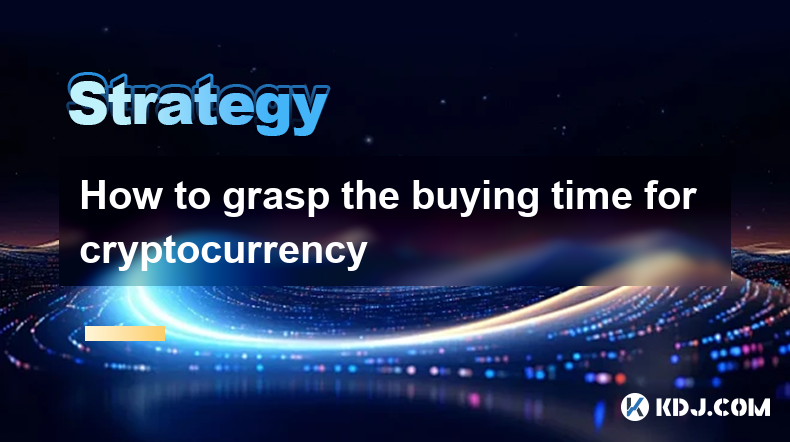
Timing the market is notoriously difficult, even for seasoned investors. This is especially true in the volatile world of cryptocurrency. There's no magic formula, but understanding market trends, technical analysis, and your own risk tolerance can significantly improve your chances of buying at a favorable price. This article explores strategies to help you navigate this challenge.
Understanding Market Sentiment
Analyzing market sentiment is crucial. Positive sentiment, often reflected in news articles, social media discussions, and overall price trends, can suggest a potential buying opportunity after a period of growth. Conversely, negative sentiment, characterized by widespread fear and selling, might present a buying opportunity if you believe the dip is temporary. However, remember that sentiment can be easily manipulated, so always conduct your own thorough research.
Technical Analysis Tools for Crypto Buying
Technical analysis uses charts and indicators to predict future price movements. Several tools are available to assist.
- Moving Averages: These smooth out price fluctuations, helping identify trends. A common strategy is to buy when the price crosses above a short-term moving average.
- Relative Strength Index (RSI): This indicator measures the magnitude of recent price changes to evaluate overbought or oversold conditions. A low RSI might signal a potential buying opportunity.
- MACD (Moving Average Convergence Divergence): This identifies momentum changes by comparing two moving averages. A bullish crossover can suggest a buy signal.
- Support and Resistance Levels: These are price levels where the price has historically struggled to break through. A bounce off a support level could be a buying opportunity.
Remember, technical analysis is not foolproof. These indicators should be used in conjunction with other forms of analysis, not in isolation.
Fundamental Analysis in Crypto Investment
Fundamental analysis focuses on the underlying value of a cryptocurrency. This involves examining factors such as:
- The project's technology: Is the technology innovative and well-executed? Does it solve a real-world problem?
- The team behind the project: Are the developers experienced and reputable?
- Adoption rate: Is the cryptocurrency being widely used and accepted?
- Regulatory landscape: What are the legal and regulatory implications of the cryptocurrency?
A strong fundamental outlook can suggest a good long-term investment, even if the short-term price is volatile. A dip in price for a fundamentally sound project could be a prime buying opportunity.
Dollar-Cost Averaging (DCA) Strategy
Dollar-cost averaging involves investing a fixed amount of money at regular intervals, regardless of price fluctuations. This strategy mitigates the risk of buying high and selling low. By consistently investing, you buy more when prices are low and less when prices are high, averaging out your cost basis over time. This is a particularly useful strategy for long-term investors.
Considering Market Cycles
Cryptocurrency markets often follow cyclical patterns, with periods of significant growth (bull markets) followed by periods of decline (bear markets). Understanding these cycles is essential for timing your purchases.
- Bull Market: While tempting to buy high, it's crucial to remain cautious and avoid FOMO (fear of missing out). Consider accumulating gradually or waiting for minor dips within the bull run.
- Bear Market: Bear markets offer potentially lucrative buying opportunities, but require careful risk assessment. Only invest what you can afford to lose and be prepared for further price drops.
Risk Management and Diversification
Never invest more than you can afford to lose. Cryptocurrency is highly volatile, and losses are possible. Diversification across multiple cryptocurrencies can help reduce risk. Don't put all your eggs in one basket.
Staying Informed and Patient
Keeping abreast of market news and developments is vital. Follow reputable news sources, participate in informed online communities, and continuously learn about the crypto space. Patience is key; don't rush into decisions based on short-term price fluctuations. Successful crypto investing often requires a long-term perspective.
The Importance of Patience and Discipline
Emotional decision-making is a common pitfall in cryptocurrency trading. Fear and greed can lead to impulsive buys and sells, often resulting in losses. Developing a disciplined approach, sticking to your investment strategy, and resisting emotional impulses is crucial for long-term success.
Utilizing Limit Orders
Limit orders allow you to buy a cryptocurrency at a specific price or lower. This strategy allows you to avoid impulse buys at unfavorable prices, ensuring you only acquire the asset when it meets your predetermined criteria. This is a powerful tool for disciplined investing.
Analyzing On-Chain Metrics
On-chain analysis examines data directly from the blockchain, offering insights into network activity and user behavior. Metrics like transaction volume, active addresses, and miner revenue can provide valuable clues about market sentiment and potential price movements. This provides a more objective measure than sentiment alone.
Considering Altcoins
While Bitcoin often dominates the conversation, altcoins (alternative cryptocurrencies) can offer unique opportunities. Thorough research is crucial before investing in altcoins, as they are often more volatile than Bitcoin. Focus on projects with strong fundamentals and a clear use case.
Frequently Asked Questions
Q: Is there a guaranteed way to time the crypto market?
A: No, there is no guaranteed way to perfectly time the market. Cryptocurrency markets are inherently volatile and unpredictable. The strategies outlined above aim to improve your chances, but they don't eliminate risk.
Q: How can I manage the risk of investing in cryptocurrency?
A: Risk management involves diversifying your portfolio, only investing what you can afford to lose, and employing strategies like dollar-cost averaging. Thorough research and understanding your own risk tolerance are also essential.
Q: What are some reliable sources for cryptocurrency news?
A: Several reputable news sources cover the cryptocurrency market. It's advisable to consult multiple sources and critically evaluate the information you find. Be wary of sources promoting specific investments.
Q: What is the best strategy for buying cryptocurrency?
A: The "best" strategy depends on your individual risk tolerance, investment goals, and time horizon. A combination of fundamental and technical analysis, along with strategies like dollar-cost averaging, can be effective.
Q: How often should I check my cryptocurrency investments?
A: How often you check your investments depends on your personal preference and investment strategy. Frequent checking can lead to emotional decision-making, so a less frequent approach is often recommended, especially for long-term investors.
Disclaimer:info@kdj.com
The information provided is not trading advice. kdj.com does not assume any responsibility for any investments made based on the information provided in this article. Cryptocurrencies are highly volatile and it is highly recommended that you invest with caution after thorough research!
If you believe that the content used on this website infringes your copyright, please contact us immediately (info@kdj.com) and we will delete it promptly.
- Grayscale Launches Two New Bitcoin-Themed Exchange-Traded Funds (ETFs) Targeting Income Generation
- 2025-04-03 10:15:21
- China Discovers Massive 1,000-Ton Gold Deposit in Its Northeast
- 2025-04-03 10:15:21
- Fidelity Investments introduces an individual retirement account (IRA) that permits private investors to invest in cryptocurrencies
- 2025-04-03 10:10:13
- President Donald Trump Announces Sweeping Reciprocal Tariffs on Global Imports and Declares April 2, 2025, “Liberation Day”
- 2025-04-03 10:10:13
- The price of Solana (SOL) is desperately trying to remain above important support levels amid increasing pressure
- 2025-04-03 10:05:13
- Ethereum (ETH) is again in the limelight, since technical indicators indicate bullish and network activities to a possible turnaround.
- 2025-04-03 10:05:13
Related knowledge
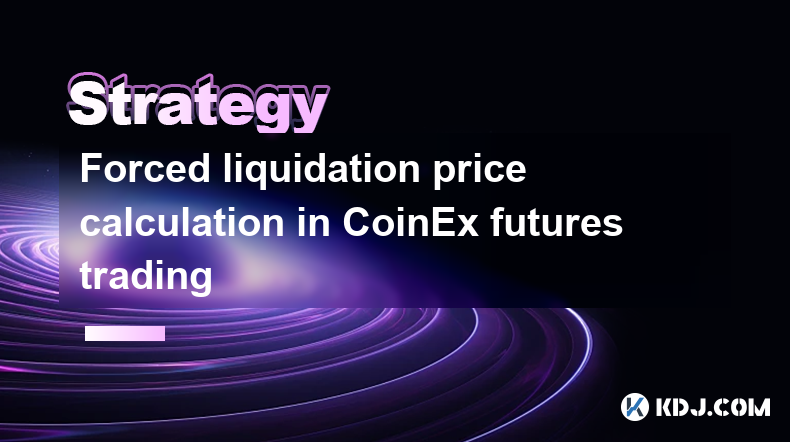
Forced liquidation price calculation in CoinEx futures trading
Apr 03,2025 at 05:35am
In CoinEx futures trading, understanding the forced liquidation price is crucial for managing risk and maintaining your positions. The forced liquidation price is the point at which your position is automatically closed to prevent further losses. This mechanism is designed to protect both the trader and the platform from negative account balances. The c...
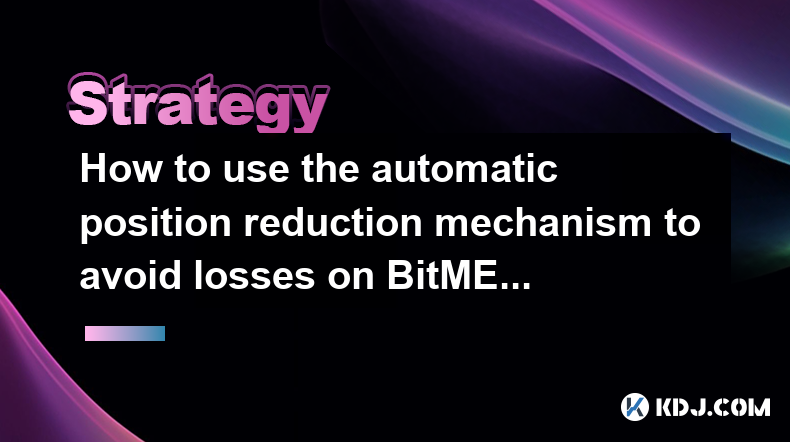
How to use the automatic position reduction mechanism to avoid losses on BitMEX
Apr 03,2025 at 02:56am
Using the automatic position reduction mechanism on BitMEX can be a strategic approach to managing risk and avoiding potential losses in the volatile cryptocurrency market. This feature, also known as Auto Deleveraging (ADL), is designed to help traders by automatically reducing their positions in certain conditions. To effectively use this mechanism, i...
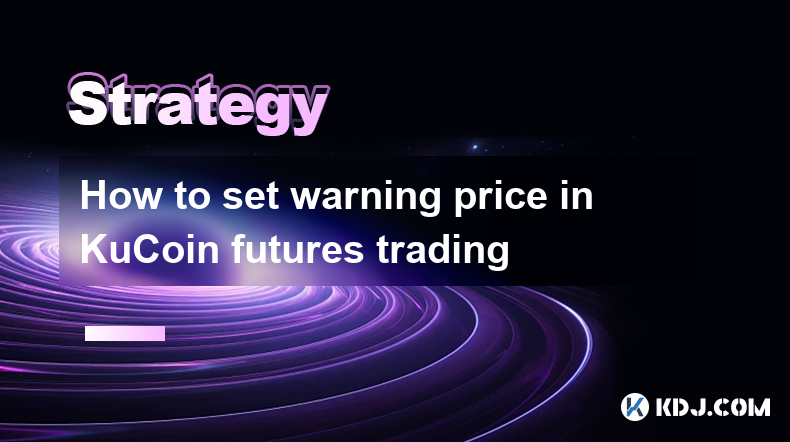
How to set warning price in KuCoin futures trading
Apr 03,2025 at 08:14am
Setting a warning price in KuCoin futures trading is an essential feature for managing risk and staying informed about market movements. This tool allows traders to receive notifications when the price of a futures contract reaches a specific level, helping them make timely decisions. To set a warning price, you need to navigate to the futures trading i...
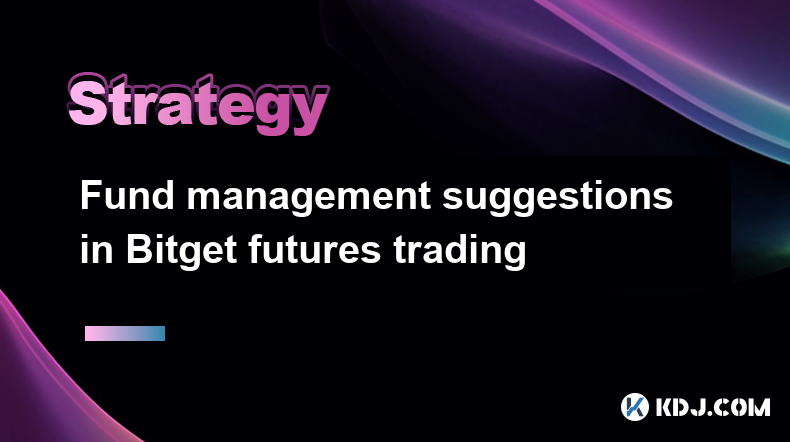
Fund management suggestions in Bitget futures trading
Apr 03,2025 at 09:28am
Trading futures on Bitget can be an exciting yet challenging endeavor. Effective fund management is crucial to maximize profits and minimize risks. This article will provide comprehensive suggestions on managing your funds while trading futures on Bitget. We will cover setting up a trading account, understanding leverage, implementing risk management st...
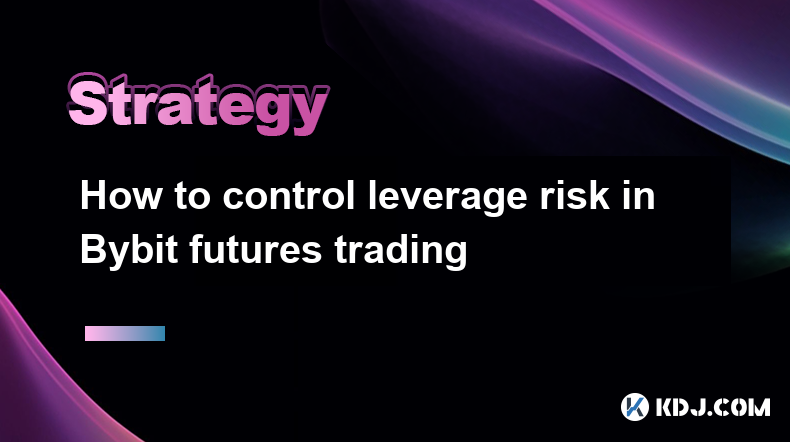
How to control leverage risk in Bybit futures trading
Apr 03,2025 at 04:36am
Trading futures on Bybit can be an exciting way to engage with the cryptocurrency market, but it comes with significant risks, particularly when using leverage. Leverage allows traders to amplify their exposure to the market, but it can also magnify losses. Understanding and controlling leverage risk is crucial for any trader looking to navigate the vol...
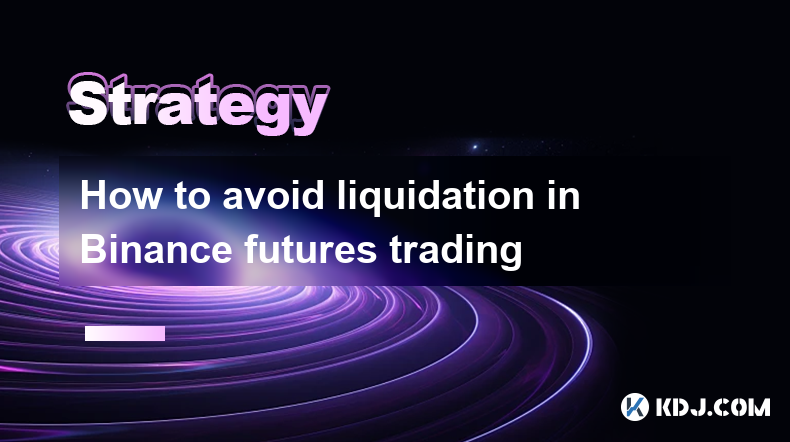
How to avoid liquidation in Binance futures trading
Apr 02,2025 at 10:28pm
Trading in Binance futures can be an exciting yet risky endeavor. One of the most significant risks traders face is liquidation, which occurs when the market moves against your position, and your account's margin balance falls below the maintenance margin requirement. To avoid liquidation, it's crucial to understand the mechanics of futures trading and ...

Forced liquidation price calculation in CoinEx futures trading
Apr 03,2025 at 05:35am
In CoinEx futures trading, understanding the forced liquidation price is crucial for managing risk and maintaining your positions. The forced liquidation price is the point at which your position is automatically closed to prevent further losses. This mechanism is designed to protect both the trader and the platform from negative account balances. The c...

How to use the automatic position reduction mechanism to avoid losses on BitMEX
Apr 03,2025 at 02:56am
Using the automatic position reduction mechanism on BitMEX can be a strategic approach to managing risk and avoiding potential losses in the volatile cryptocurrency market. This feature, also known as Auto Deleveraging (ADL), is designed to help traders by automatically reducing their positions in certain conditions. To effectively use this mechanism, i...

How to set warning price in KuCoin futures trading
Apr 03,2025 at 08:14am
Setting a warning price in KuCoin futures trading is an essential feature for managing risk and staying informed about market movements. This tool allows traders to receive notifications when the price of a futures contract reaches a specific level, helping them make timely decisions. To set a warning price, you need to navigate to the futures trading i...

Fund management suggestions in Bitget futures trading
Apr 03,2025 at 09:28am
Trading futures on Bitget can be an exciting yet challenging endeavor. Effective fund management is crucial to maximize profits and minimize risks. This article will provide comprehensive suggestions on managing your funds while trading futures on Bitget. We will cover setting up a trading account, understanding leverage, implementing risk management st...

How to control leverage risk in Bybit futures trading
Apr 03,2025 at 04:36am
Trading futures on Bybit can be an exciting way to engage with the cryptocurrency market, but it comes with significant risks, particularly when using leverage. Leverage allows traders to amplify their exposure to the market, but it can also magnify losses. Understanding and controlling leverage risk is crucial for any trader looking to navigate the vol...

How to avoid liquidation in Binance futures trading
Apr 02,2025 at 10:28pm
Trading in Binance futures can be an exciting yet risky endeavor. One of the most significant risks traders face is liquidation, which occurs when the market moves against your position, and your account's margin balance falls below the maintenance margin requirement. To avoid liquidation, it's crucial to understand the mechanics of futures trading and ...
See all articles
























































































